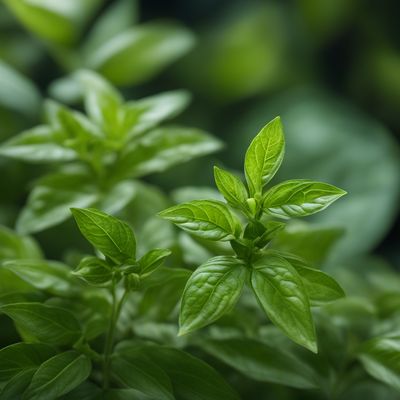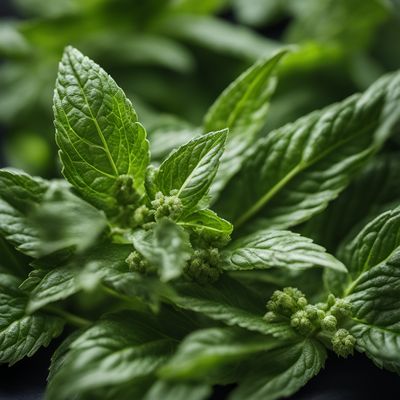
Ingredient
Holy basil
The Sacred Herb: Holy Basil
Holy basil, or tulsi, is a herb that is considered sacred in Hinduism and is widely used in Ayurvedic medicine. It has a distinct aroma and a slightly peppery, clove-like flavor. Holy basil is used in various culinary applications, including teas, soups, curries, and stir-fries, and is believed to have numerous health benefits.
Origins and history
Holy basil has a long history of cultivation and use in India, where it is considered a sacred plant. It is believed to have originated in the Indian subcontinent and has been used for centuries in Ayurvedic medicine for its medicinal properties. Holy basil is also grown and used in other Southeast Asian countries, such as Thailand and Indonesia, where it is an essential ingredient in traditional cuisines.
Nutritional information
Holy basil is a good source of vitamins A and K, as well as essential minerals such as calcium and iron. It also contains antioxidants and has been associated with various health benefits, including reducing stress and inflammation.
Allergens
Holy basil may cause allergic reactions in individuals with a sensitivity to basil or related plants. It is recommended to use caution and consult with a healthcare professional if you have any concerns or known allergies.
How to select
When selecting holy basil, look for fresh leaves that are vibrant green in color and free from any signs of wilting or discoloration. Avoid leaves that have yellow spots or blemishes. If purchasing from a grocery store or farmers market, opt for organic or locally grown varieties for the best quality and flavor.
Storage recommendations
To maintain the freshness of holy basil, store it in the refrigerator wrapped in a damp paper towel or in a container with water. This will help keep the leaves hydrated and prevent wilting. Alternatively, the leaves can be dried or frozen for longer storage.
How to produce
Holy basil can be easily grown in home gardens or containers. It requires well-drained soil, ample sunlight, and regular watering. Seeds or seedlings can be planted in the spring or early summer, and the leaves can be harvested as needed throughout the growing season.
Preparation tips
Holy basil leaves can be used fresh or dried in a variety of dishes. They can be added to teas, soups, curries, stir-fries, or salads to impart their aromatic flavor. Holy basil is also commonly used to make herbal infusions or tinctures for its medicinal properties. It is important to add the leaves towards the end of the cooking process to preserve their flavor and aroma.
Substitutions
Thai basil or sweet basil can be used as substitutes for holy basil in recipes. While they have slightly different flavor profiles, they can provide a similar aromatic quality to dishes. However, it is important to note that the taste may vary slightly.
Culinary uses
Holy basil is commonly used in various cuisines, including Indian, Thai, and Indonesian. It is used in teas, soups, curries, stir-fries, and salads to add a unique flavor and aroma. It is also used in traditional Ayurvedic medicine for its medicinal properties.
Availability
Holy basil is commonly available in regions where it is grown, such as India, Thailand, and Indonesia. It can also be found in specialty grocery stores or Asian markets in other parts of the world.
More ingredients from this category » Browse all

Chinese mesona
The Cooling Elixir

Thai basil
The Fragrant Herb: Thai Basil

Mints
The Refreshing Herb

Lesser calamint
The Mediterranean Herb Wonder

Vietnamese mint
The Zesty Herb

Basil
The King of Herbs

Greek bush basil
The Fragrant Herb of the Mediterranean: Greek Bush Basil

Hoary basil
The Aromatic Herb: Hoary Basil

Lemon basil
The Zesty Herb: Unveiling the Delights of Lemon Basil

Rice paddy herb
The Fragrant Gem

Asiatic pennywort
The Healing Herb: Unveiling the Wonders of Asiatic Pennywort

Lizard tail
The Enigmatic Delicacy: Lizard Tail